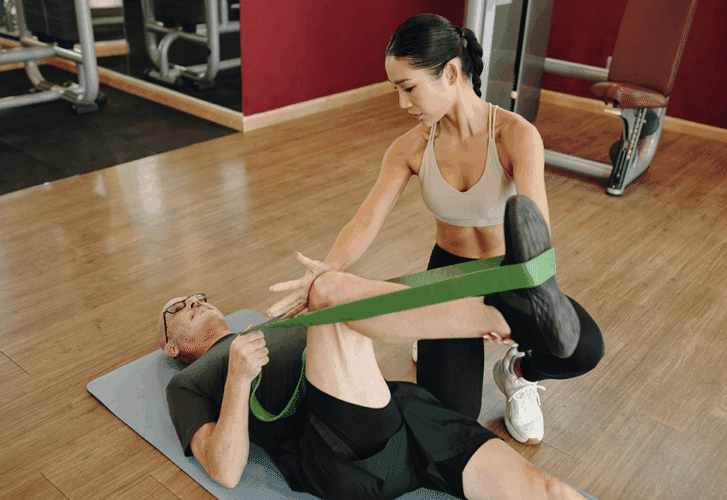
The fitness industry continues to grow, and flexibility training is now a key component in many wellness programs. Stretching specialists are finding roles in gyms, rehab clinics, wellness studios, and private training centers across Florida.
While demand for this expertise rises, many professionals are asking the same question: What is the average stretching and flexibility coach salary in Florida?
This salary figure reflects more than just income, as it represents growing appreciation for the value of mobility, posture correction, and injury prevention. While this field may not lead the national pay scale, it offers reliable income opportunities and personal fulfillment.
What The Numbers Say In 2025
As of mid-2025, the average hourly pay for a Stretch Practitioner in Florida sits at $14.81. That equals around $30,812 per year.
Some earn as low as $10.42 an hour, while those in higher-paying roles can reach $17.60. Although Florida ranks 50th nationwide for this profession, that number does not tell the full story.
In places like Boca Raton, Port St. Lucie, and Miami Beach, coaches can earn between $19 and $20 an hour. Boca Raton tops the list at $41,277 a year. That is about $10,000 more than the state average.
Why Location Affects Income
Stretch coaches working in cities with strong wellness demand often earn more. In Boca Raton, gyms regularly offer one-on-one stretching sessions as a premium service.
In Miami Beach, luxury spas and sports therapy clinics actively seek certified flexibility professionals. These environments support higher pay because clients are willing to invest in personalized service, recovery solutions, and peak performance care.
In smaller towns or rural areas, there are fewer places that specialize in flexibility work. That does not mean the role disappears. Instead, it often becomes part of a broader fitness coaching job where stretching supports other goals. Expanding your skill set opens more doors.
Your location plays a major role in shaping the stretching and flexibility coach salary you can expect.
Stretch Coaching as a Career Entry Point
Many individuals begin their fitness careers with stretch coaching. It builds confidence in anatomy, cueing, and safe client handling. It also sharpens communication skills, which are vital in any coaching profession. This role gives newcomers a chance to gain hands-on experience early.
For massage therapists or fitness trainers, stretch work can expand the services they offer. Clients often request flexibility-focused sessions, especially for recovery or improved performance. Offering this service may increase your hourly rate when paired with strength training or mobility work.
Though it may sound simple, stretching addresses real client needs. Desk workers, athletes, and aging adults all benefit from improved flexibility. No matter if it is tight hips or limited shoulder mobility, these issues create a steady demand for skilled professionals.
Skill Level Impacts Salary Too
A coach’s skill level significantly affects pay. Programming an effective stretch session takes more than just basic moves. You need to understand fascia, range of motion, breathing patterns, and client readiness.
Employers may pay more to professionals with credentials in neuromuscular therapy, corrective exercise, or functional mobility. Coaches who lead small group classes with confidence and explain each movement clearly often command higher rates.
Your ability to present professionally also plays a role. Clients trust instructors who can explain why each stretch matters and what to expect. A well-structured 30-minute session can become a valuable service if the client walks away feeling looser, lighter, and more mobile.
Stretching Certification Adds Professional Value
A formal stretch coach certification can set you apart from others in the field. Certification shows that you follow safety guidelines, understand anatomy, and know how to lead sessions effectively. Many gyms now require or prefer certification for liability reasons.
Some personal trainers enter the space with a broader personal fitness training background. That path offers deeper insight into movement correction and long-term client support. Others choose to specialize further and study assisted stretching techniques, trigger point work, or even senior mobility.
For those who want to move beyond basic flexibility work, stretching is a gateway. You might branch into injury prevention, physical therapy assistant work, or athletic mobility coaching.
How Stretch Work Compares to Related Roles
Compared to general fitness training, stretch coaching pays less on average. However, the gap closes if you work in a luxury setting or build a loyal client base. Flexibility specialists who focus on sports recovery or corrective movement can earn similar rates to mid-level personal trainers.
Some stretch practitioners combine roles. They work as mobility coaches during group warmups and take clients for 1-on-1 sessions later. Others run independent mobile services and meet clients at home.
Ready To Start Stretching Careers That Move People Forward?
National Personal Training Institute of Florida helps turn your passion for movement into long-term career potential. Our stretch coach certification blends hands-on techniques with science-backed instruction. We also offer full personal fitness training programs to take your skills further.
If you want to help people move with ease, age well, or recover stronger, you are in the right place.

